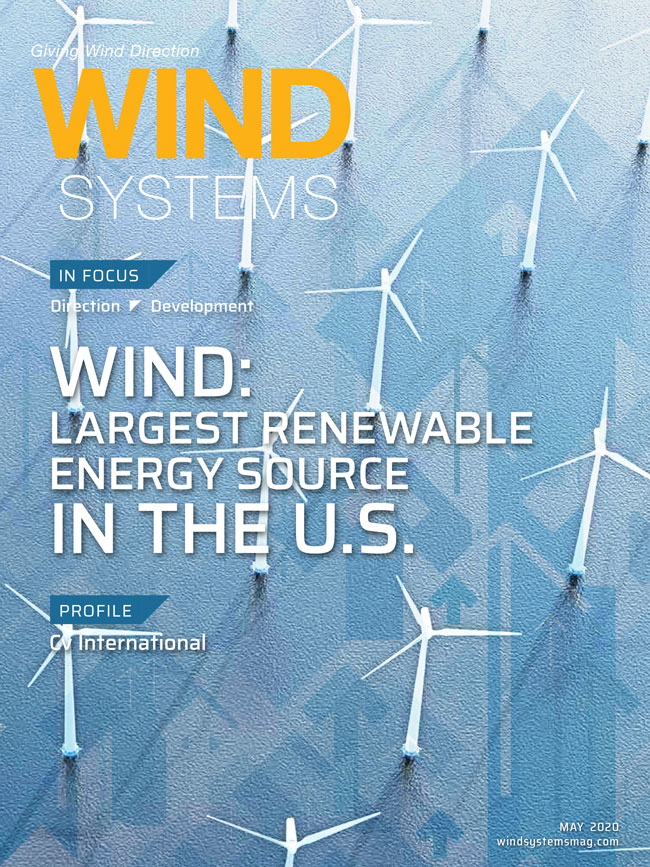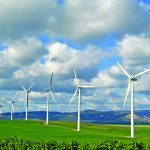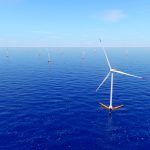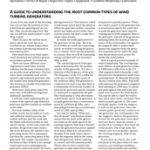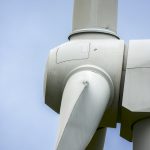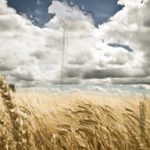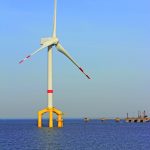The U.S. wind industry achieved two remarkable milestones in 2019 thanks to the ingenuity and hard work of the country’s wind-energy workforce. First, we now have more than 100 GW of installed capacity. That’s enough wind power to meet the electricity needs of 32 million homes. This success story is decades in the making, and it has created well-paying jobs, new opportunities across rural America, and affordable, reliable, clean electricity.
American wind power was born in the California desert in the 1980s. Over the ensuing years, innovators and pioneers reduced costs, improved reliability and turned wind power into a mainstream energy source. That work paid off — while it took 28 years to build the first 25 GW of wind power, we’ve only needed 11 years to build the next 75. As a result, wind now generates enough electricity to meet the demands of California (the world’s fourth largest economy) and New Jersey combined.
Second, wind is now the largest source of renewable energy in the U.S. In 2019, wind reliably and affordably supplied more than 7 percent of the country’s electricity. Locally, the numbers are even more impressive. Six states — Iowa, Kansas, Oklahoma, North Dakota, South Dakota, and Maine — rely on wind to supply more than 20 percent of their electricity. In fact, wind generation exceeds 40 percent in Iowa and Kansas, and in both states, wind is now the largest source of electricity.
The next decade will be seminal for American wind power. We’re on track to meet 20 percent of the country’s electricity demand by 2030, and U.S. offshore wind is burgeoning into a clean-energy powerhouse. Our project development pipeline is at near-record levels, and with your help we can build the clean energy grid of the future. There’s much work that still needs to be done to make this happen, but first let’s look at the ways wind is powering opportunity across America:
Wind Energy is the Preferred Choice for New Power
Wind power was the No. 1 choice of new utility-scale power generation in 2019, capturing 39 percent of new additions. Over the past decade, wind power represents 30 percent of utility-scale power plant installations, and 2019 was the industry’s third strongest year for installations on record. And there’s more on the way — demand for wind energy set a new record as utilities and corporate buyers announced nearly 9 GW of new wind power contracts in 2019.
Overall, the pipeline of wind projects either under construction or in advanced development exceeds 44 GW. Across 33 states, 191 different wind projects are now in the works, representing $62 billion worth of investments. When these wind farms are completed, they’ll generate enough electricity to power another 15 million American homes.
Why has wind become the power source of choice? Economics. Wind’s costs have fallen by 70 percent over the past decade — it’s now the most affordable source of new electricity throughout much of the country. These cost declines are spurred by technological advances that let newer turbines reach stronger, steadier winds, which also makes wind economically feasible in more parts of the country, including those with less robust wind resources. Improved domestic manufacturing also has played an important role in driving costs down, while tapping into cutting edge tools such as predictive analytics and big data that have lowered operations and maintenance costs as well.
Wind’s affordability and long-term price stability is a big reason why Fortune 500 companies across the country are choosing it to power their factories, stores, and data centers. In fact, corporate buyers accounted for 40 percent of the power purchase agreements signed in 2019, and AT&T and Walmart were the year’s top two largest wind buyers. There were many newcomers to enter the wind market as well, representing diverse industries with first-time buyers in 2019 including one of the world’s largest oil field services provider, Baker Hughes; multinational cosmetics manufacturer, Estee Lauder; and McDonald’s, the first fast food restaurant brand to buy wind power.
“For us, that’s kind of a gate,” said Apple CEO Tim Cook, explaining why his company built new data centers in Iowa. “If we couldn’t (power them with wind), we would not be here.”
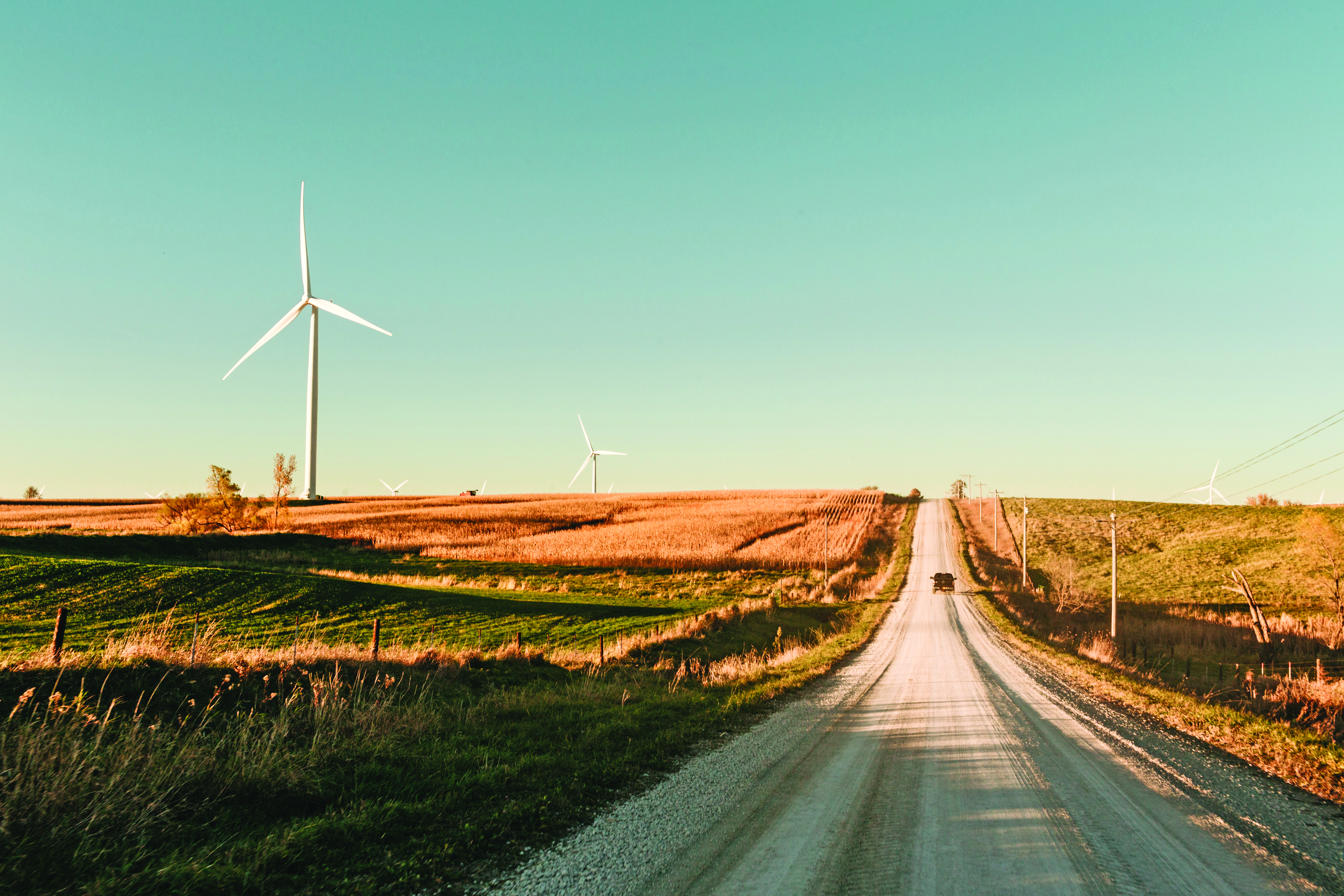
Wind Powers a Rural Renaissance
All this growth brings nearly unmatched investment to rural America, home to the country’s strongest wind resources and 99 percent of wind projects. Wind brings new revenue that communities can use to fix roads, invest in schools, and upgrade emergency services equipment. In 2019 alone, wind projects paid $1.6 billion in state and local taxes and landowner lease payments.
“We’ll be building three state-of-the-art science classrooms; a new life skills special education wing; a new middle school/junior high wing for our students in sixth, seventh, and eighth grade; as well as a new gymnasium and a new band room. Our current band room shares a wall with our library, which is not the best situation. So that will be out on the edge of the school now and they can blow their horns as loud as they want to,” said Amy Shane, superintendent of Nebraska’s O’Neill School District. “I don’t think we would have been able to do this project, at least not at this time (without wind revenue).”
Land-lease payments also provide landowners with a drought-proof cash crop that helps them weather lean years and invest in and expand their operations during good times.
“It’s a challenge every day if you’re a farmer or a rancher. You depend on the weather in the farming business. Right now, we’re in the midst of a really long, hard drought,” said Storm Gerhart of Curry County, New Mexico. “I get a good feeling when I look at that turbine. I take pride in it. You can get tired of the wind blowing in your face every day for day after day. But now, when you want to grumble a little bit about it, you can look over there at that turbine and you say, ‘Well, that’s good; that’s good.’”
Wind Powers Job Creation in All 50 States
The U.S. wind industry now directly employs more than 115,000 Americans, spread across 50 states. Jobs range from wind technicians to factory workers, engineers, finance experts, and construction workers. Wind-turbine technician remains the second fastest growing job in the country according to the U.S. Bureau of Labor Statistics, and veterans find wind jobs at a rate 61 percent higher than the average U.S. industry.
Many of these jobs are in rural America, offering young people the opportunity to find rewarding careers that allow them to put down roots and support their families without having to leave home.
“If the wind farm didn’t get built, I’m not sure what I would be doing. To have a job similar to this, I’d be commuting, which isn’t ideal for myself or my family,” said Chelsea Borrette, operations maintenance planner at the Prairie Breeze Wind Farm in Nebraska. “Having this position means that I don’t have to travel out of the community I was born and raised in and want to support. For my family, I’m always around for my son, my husband. I’m able to be present.”
Wind power is one of the few industries creating new American manufacturing jobs as well. Today, more than 530 U.S. factories across 43 states build wind-turbine components, employing more than 26,000 Americans.
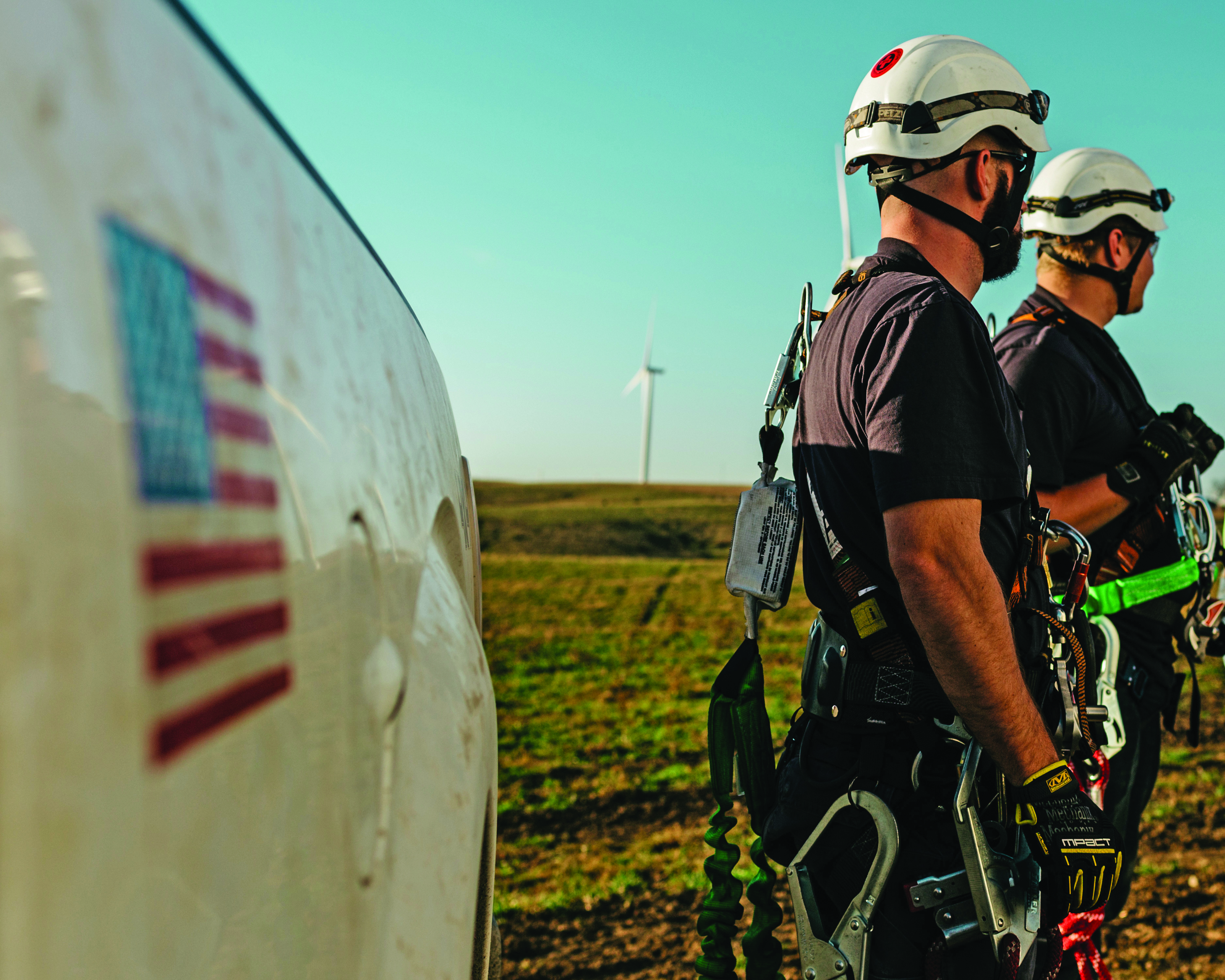
Offshore Wind Begins to Take Shape
States up and down the East Coast have made substantial offshore wind commitments as they look to supply many of the country’s largest population centers with competitively priced, reliable, clean energy. From Massachusetts to Virginia, these pledges now total more than 25,000 MW, enough to power millions of American homes and help keep utility costs stable for residents.
Meeting these targets will require constructing thousands of offshore wind turbines, and that means well-paying jobs for dozens of occupations, including welders, wind technicians, electricians, longshoremen, vessel operators, and many more positions. AWEA estimates that building 30,000 MW of offshore wind could support more than 83,000 jobs by 2030. It would also represent $57 billion of investment in the U.S. economy and deliver $25 billion of annual economic activity by 2030.
Many of these jobs will be in the supply chain. As steel goes in the water and American offshore wind farms begin to come online, we’ll need facilities and workers here domestically to build the supplies the industry needs.
While many of these jobs will be on the East Coast near operating wind projects, it’s important to remember offshore wind will create nationwide benefits and job opportunities. We’ll need to tap into the expertise of communities and workers throughout the country to get the job done. For example, several Gulf Coast companies whose primary business involves offshore oil and gas helped construct the first U.S. offshore project, Rhode Island’s Block Island Wind Farm. The Gulf knows how to build ocean energy infrastructure, and workers in the region will play a key role in building East Coast offshore wind projects.
Offshore wind offers legacy energy companies a way to diversify their businesses so they can thrive even during oil and gas downturns, which many are currently experiencing.
Jobs and a supply chain are just the beginning — the community investments are real, too. So far, companies have announced investments of $307 million in port-related infrastructure, $650 million in transmission infrastructure, and $342 million in U.S. manufacturing facilities and supply chain development. These are just the publicly known figures. We’ve seen other announcements to establish offshore wind hubs and factories along the coast that have not yet listed a specific dollar amount but represent millions of additional dollars invested. Companies have also signed contracts to build four new U.S.-flagged crew transfer vessels to support offshore wind project development, which is a preview of the ship building activity to come as we grow our offshore wind pipeline.
Wind Powers A Clean Environment
As the world looks for solutions to combat carbon pollution, wind can play a leading role. In the U.S., wind already voids 42 million cars’ worth of CO2 emissions. It also reduces a substantial amount of sulfur dioxide and nitrogen oxides that create smog and trigger air pollution. Lastly, wind is an enormous water saver. Because wind turbines don’t require water for cooling like conventional power plants, wind avoids 102 billion gallons of water every year.
The Path Forward
We still have work to do to fully harness our wind-power potential. The COVID-19 pandemic is causing unprecedented challenges to the U.S. healthcare system, disruptions to daily life across the country, and deep uncertainty across the economy. Global supply chain disturbances and massive public health interventions are extending these obstacles to the U.S. wind-energy industry as well. We’re working hard to understand the many hurdles our members are facing and the impacts to their businesses this represents.
Ensuring the safety of the wind workforce and protecting American jobs and economic investment remain our primary objectives.
Beyond COVID-19’s uncertainty, modernizing the electric grid and building new transmission to meet 21st century needs will play a crucial role in continuing wind’s success story. Transmission investment allows us to tap into the country’s most wind- and solar-rich areas and deliver that electricity to the towns, cities and manufacturing hubs where energy demand is highest. All of this makes the power system more reliable while lowering costs for American families and businesses, and studies show transmission upgrades more than pay for themselves in the long run. Elsewhere, the rules governing our electricity markets were created for a system much different than today’s energy mix. Wind farms can provide important reliability services such as frequency response, voltage and reactive power support, disturbance ride-through, frequency regulation, and operating reserves, and these services should be valued in the marketplace. We can’t fully harness the reliability services wind offers until market rules are updated to recognize them.
Accurately valuing wind energy’s zero-carbon electricity will also help keep our industry growing. Finally, we’re prioritizing important work to ensure thoughtful, workable permitting policies. Maintaining positive relationships with the communities hosting wind farms is critical for our industry to continue expanding.
Building 75 GW in 11 years is impressive, and we have the potential to do much more in the coming decade. American wind power stands ready to help lead the country’s recovery as we look to get our economy back on track once we defeat the COVID-19 pandemic.
















